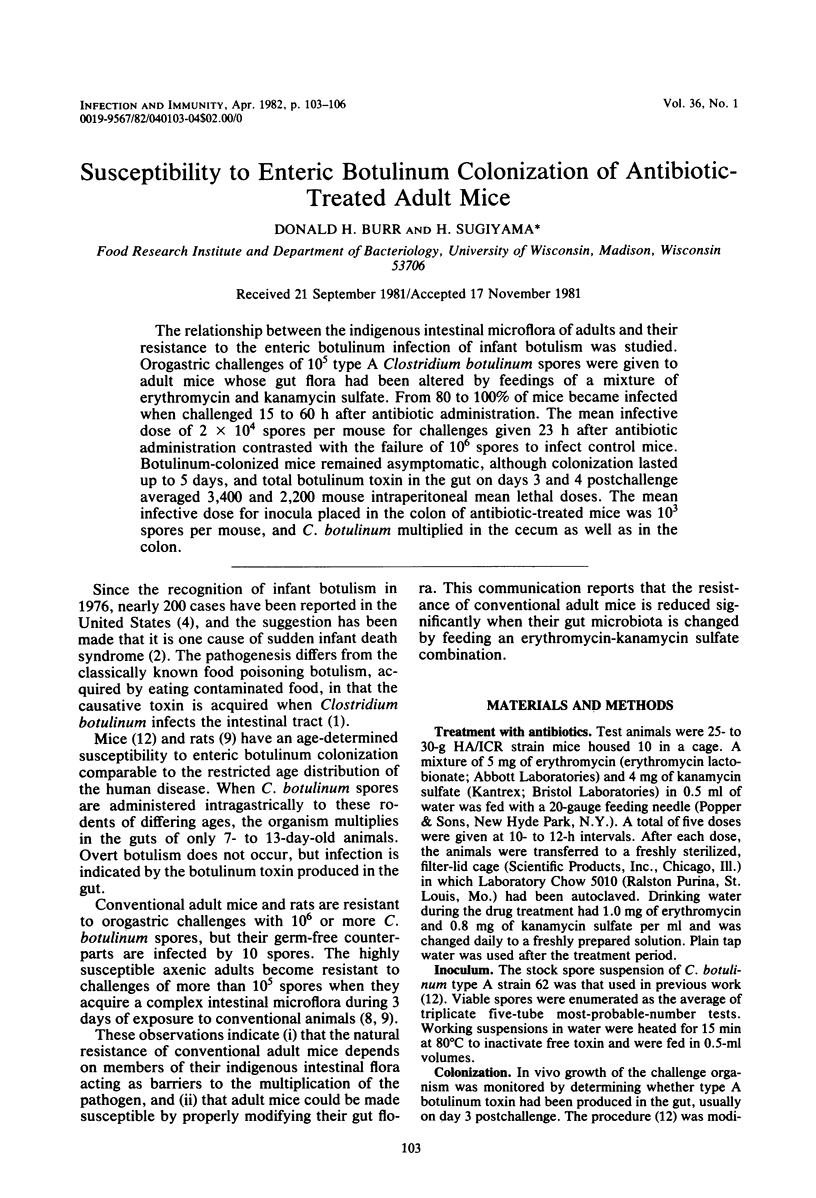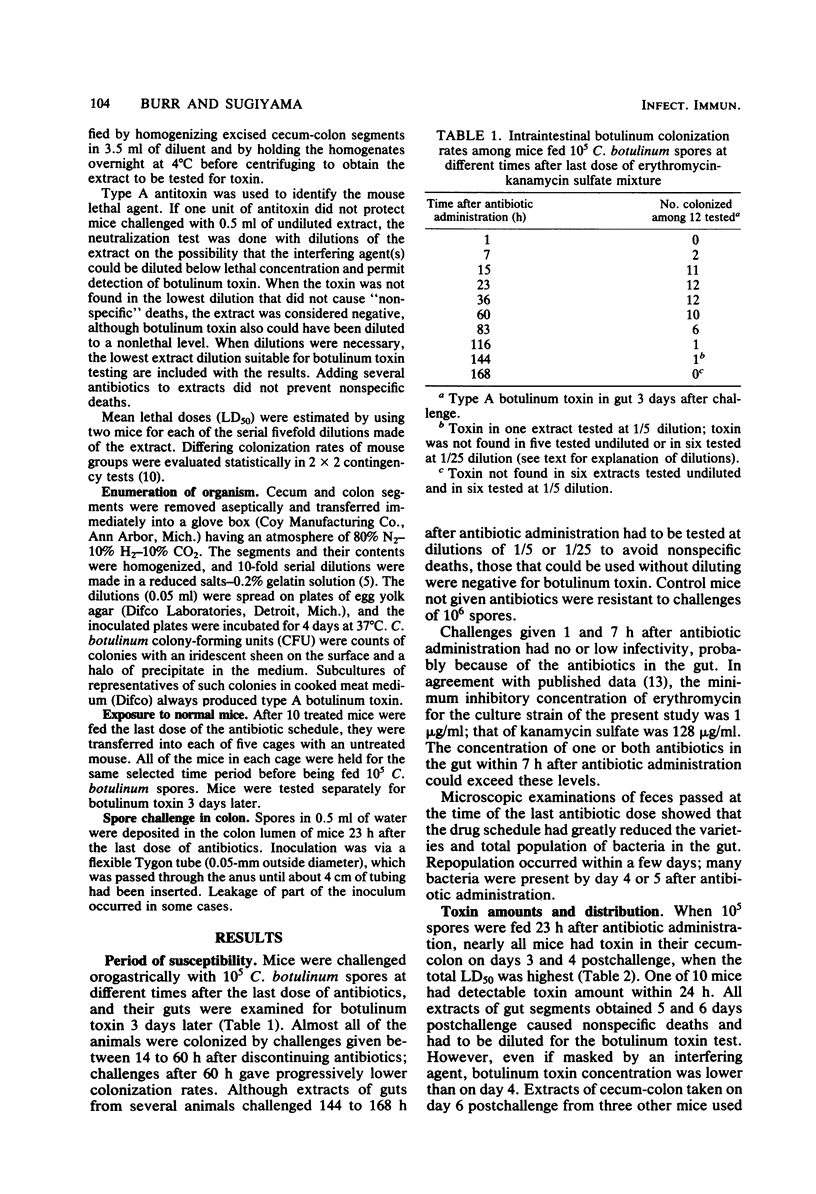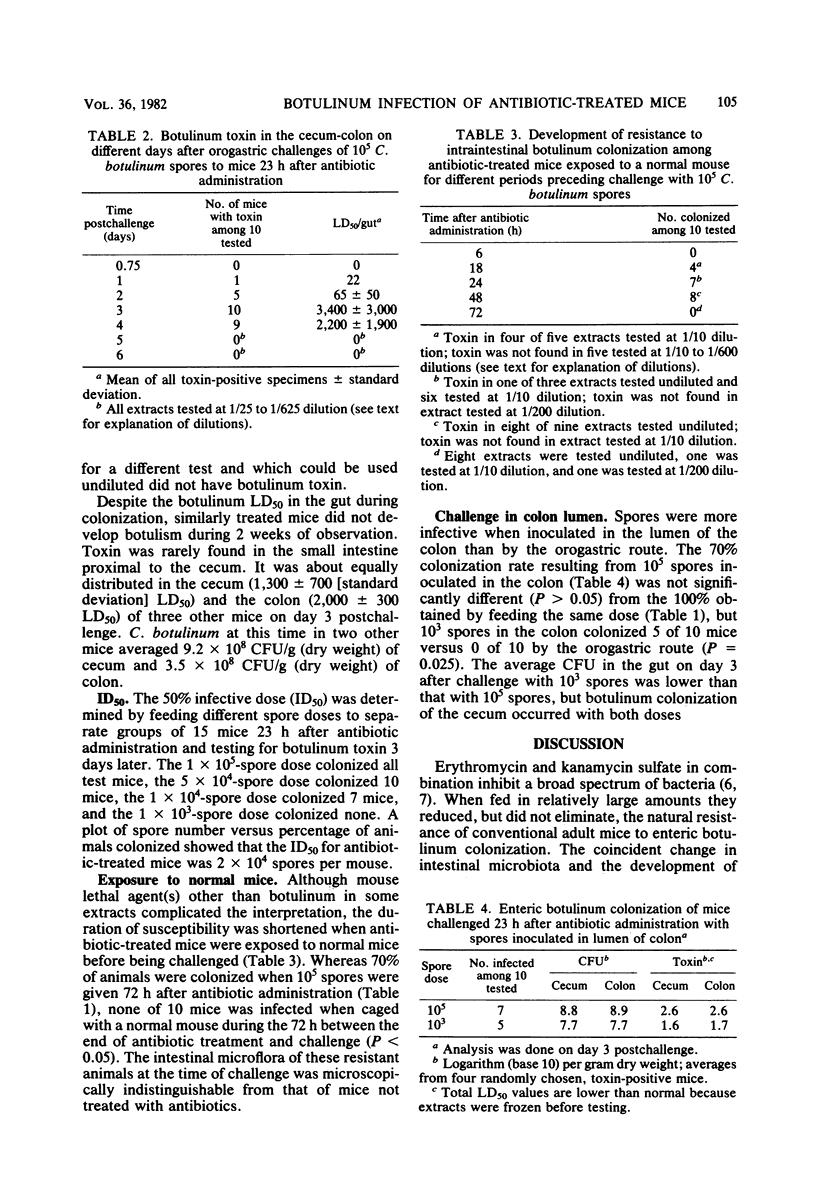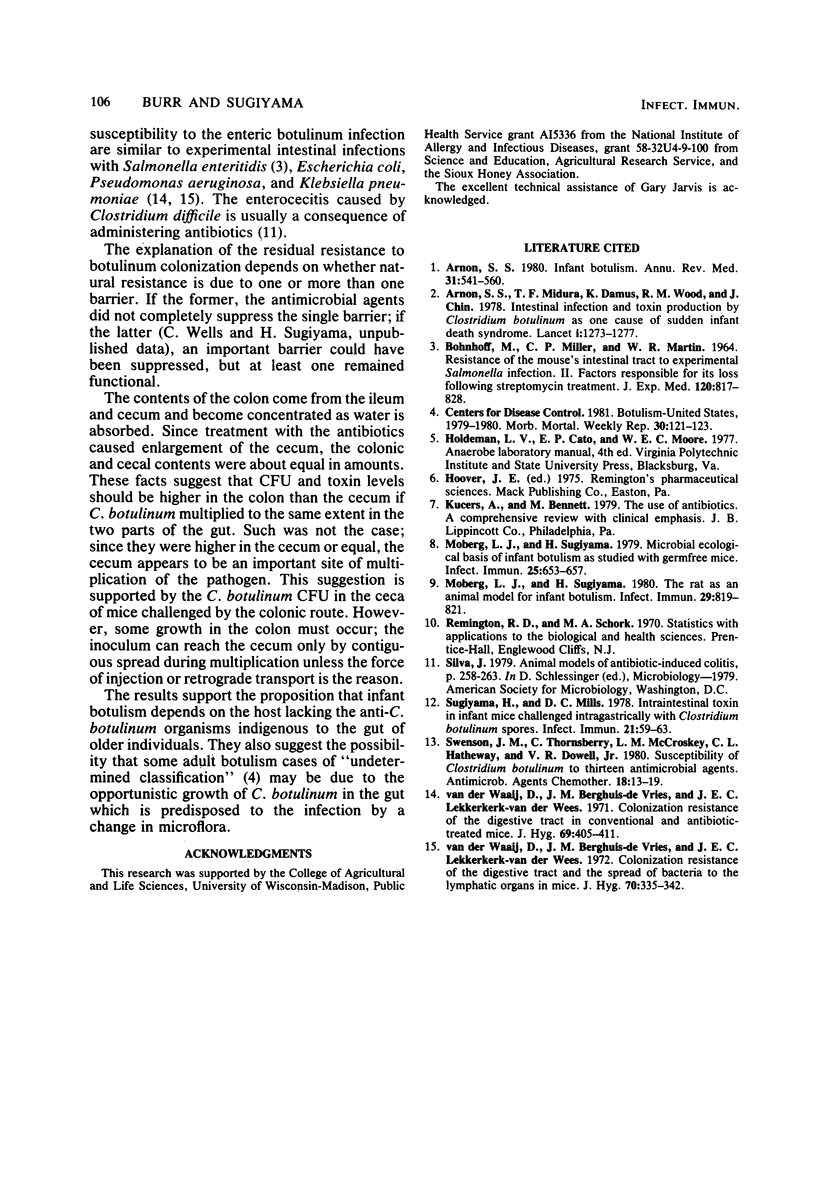Abstract
The relationship between the indigenous intestinal microflora of adults and their resistance to the enteric botulinum infection of infant botulism was studied. Orogastric challenges of 10(5) type A Clostridium botulinum spores were given to adult mice whose gut flora had been altered by feedings of a mixture of erythromycin and kanamycin sulfate. From 80 to 100% of mice became infected when challenged 15 to 60 h after antibiotic administration. The mean infective dose of 2 X 10(4) spores per mouse for challenges given 23 h after antibiotic administration contrasted with the failure of 10(6) spores to infect control mice. Botulinum-colonized mice remained asymptomatic, although colonization lasted up to 5 days, and total botulinum toxin in the gut on days 3 and 4 postchallenge averaged 3,400 and 2,200 mouse intraperitoneal mean lethal doses. The mean infective dose for inocula placed in the colon of antibiotic-treated mice was 10(3) spores per mouse, and C. botulinum multiplied in the cecum as well as in the colon.
Full text
PDF



Selected References
These references are in PubMed. This may not be the complete list of references from this article.
- Arnon S. S. Infant botulism. Annu Rev Med. 1980;31:541–560. doi: 10.1146/annurev.me.31.020180.002545. [DOI] [PubMed] [Google Scholar]
- Arnon S. S., Midura T. F., Damus K., Wood R. M., Chin J. Intestinal infection and toxin production by Clostridium botulinum as one cause of sudden infant death syndrome. Lancet. 1978 Jun 17;1(8077):1273–1277. doi: 10.1016/s0140-6736(78)91264-3. [DOI] [PubMed] [Google Scholar]
- BOHNHOFF M., MILLER C. P., MARTIN W. R. RESISTANCE OF THE MOUSE'S INTESTINAL TRACT TO EXPERIMENTAL SALMONELLA INFECTION. II. FACTORS RESPONSIBLE FOR ITS LOSS FOLLOWING STREPTOMYCIN TREATMENT. J Exp Med. 1964 Nov 1;120:817–828. doi: 10.1084/jem.120.5.817. [DOI] [PMC free article] [PubMed] [Google Scholar]
- Moberg L. J., Sugiyama H. Microbial ecological basis of infant botulism as studied with germfree mice. Infect Immun. 1979 Aug;25(2):653–657. doi: 10.1128/iai.25.2.653-657.1979. [DOI] [PMC free article] [PubMed] [Google Scholar]
- Moberg L. J., Sugiyama H. The rat as an animal model for infant botulism. Infect Immun. 1980 Aug;29(2):819–821. doi: 10.1128/iai.29.2.819-821.1980. [DOI] [PMC free article] [PubMed] [Google Scholar]
- Sugiyama H., Mills D. C. Intraintestinal toxin in infant mice challenged intragastrically with Clostridium botulinum spores. Infect Immun. 1978 Jul;21(1):59–63. doi: 10.1128/iai.21.1.59-63.1978. [DOI] [PMC free article] [PubMed] [Google Scholar]
- Swenson J. M., Thornsberry C., McCroskey L. M., Hatheway C. L., Dowell V. R., Jr Susceptibility of Clostridium botulinum to thirteen antimicrobial agents. Antimicrob Agents Chemother. 1980 Jul;18(1):13–19. doi: 10.1128/aac.18.1.13. [DOI] [PMC free article] [PubMed] [Google Scholar]
- van der Waaij D., Berghuis-de Vries J. M., Lekkerkerk Lekkerkerk-v Colonization resistance of the digestive tract in conventional and antibiotic-treated mice. J Hyg (Lond) 1971 Sep;69(3):405–411. doi: 10.1017/s0022172400021653. [DOI] [PMC free article] [PubMed] [Google Scholar]
- van der Waaij D., Berghuis-de Vries J. M., Lekkerkerk-van der Wees Colonization resistance of the digestive tract and the spread of bacteria to the lymphatic organs in mice. J Hyg (Lond) 1972 Jun;70(2):335–342. doi: 10.1017/s0022172400022385. [DOI] [PMC free article] [PubMed] [Google Scholar]


